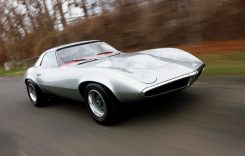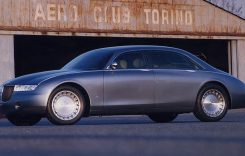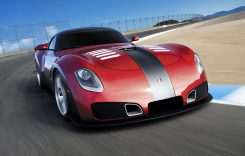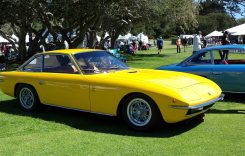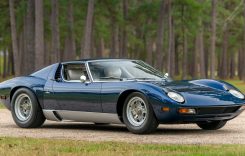Laurens van den Acker of Mazda’s Design Division, General Manager for Hiroshima, Japan laid down the gauntlet of design challenges to the three global Mazda Design Teams as soon as he arrived at the company. The quest was to find the Mazda car of the future.
After months of designs, sketches and redrafts, the final product was revealed at the Los Angeles Auto Show. Here the Nagare (pronounced “nah-gah-reh”) was unveiled. Nagare means ‘flow’ in Japanese and there’s some explanation required to understand the concept behind the design.
There are over one hundred words in the Japanese language to describe ‘motion in nature’ that do not even exist in the English language. Inspiration was taken from the wind sculpted desert dunes, the patterns on the ocean floor caused by the changing current, and the hypnotic waves caressing the lake shoreline.
The Nagare’s exterior is clearly influenced by nature. You feel compelled to touch and caress its smooth and sculpted body. “Nagare is purposely emotional and expressive. Anyone who sees it is drawn for a closer look,” explains Laurens. This tactile appeal of the Nagare has been further developed in the Ryuga concept car to be presented in Detroit.
Nagare was the original concept; however, Ryuga has extended the concept of movement in nature moving from concept car closer to a production line creation, as easily as the curves flow on the Ryuga. Unlike the Nagare, the Ryuga has an evocative interior and powertrain.

Mazda prides itself in being unique and forward thinking in its design and this is certainly the case with the Ryuga. It is bold and unique combining performance with design. It is anticipated that both the Nagare and the Ryuga will continue to influence concept and production cars for some time to come.
Mazda is developing this unique look that can be easily recognisable and can be incorporated into future designs. The recent successes in sales have given Mazda the confidence to embrace change and define the brand as an instantly recognisable model even for future cars not yet developed.
The Ryuga balances high on four large wheels. The fluidity of the car is dominant in its exterior with the sports coupe having a wedge shape that seems to float like waves around the vehicle and over the wheel arches to give the appearance of movement even when the vehicle is stationary. Each profile of the vehicle is interesting. There are no square lines or neat edges to be found anywhere.
Chief designer for Mazda Yasushi Nakamuta was pivotal in the instantly successful third generation MX -5 design in 2006. He now spearheads the Ryuga concept and recognises its revolutionary appeal. Nakamuta said that the Ryuga exudes Japan’s beauty and intelligence through its elegant and refined design elements.
Surprisingly, the Ryuga is both shorter and lower than the RX-8 four passenger sports car but it manages to accommodate the same number of passengers without scrimping on space. Continuing with the fluid movement design feel, the front bucket seats offer good lateral support and continue the natural movement theme.
This is further emphasised with the material design pattern. The centre console has a floating design and it has a multi-function touch panel interface to provide vehicle information and infotainment without distracting the driver from the road. RPM and speed are displayed in analog or digital format and is available to the driver with other driving information.
